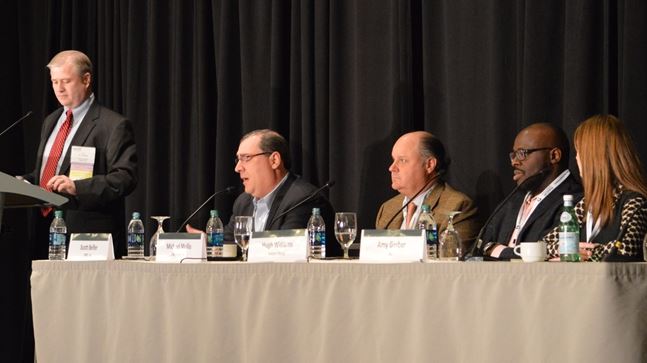7 Key Drivers
E-commerce conference
Accessibility on several counts tops the list of secrets to success in e-commerce. That was the determination of a session on e-commerce site and building selection at NAIOP’s second annual E.Con e-commerce conference, held late last week in Atlanta. Moderator K.C. Conway, senior vice president of credit risk management at SunTrust Bank, led the spirited […]

